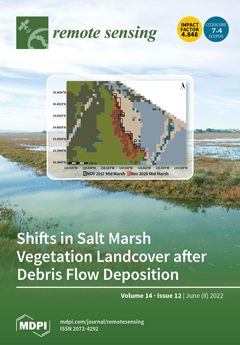As two main drivers of vegetation dynamics, climate variability and human activities greatly influence net primary productivity (NPP) variability by altering the hydrothermal conditions and biogeochemical cycles. Therefore, studying NPP variability and its drivers is crucial to understanding the patterns and mechanisms that sustain regional ecosystem structures and functions under ongoing climate variability and human activities. In this study, three indexes, namely the potential NPP (NPP
p), actual NPP (NPP
a), and human-induced NPP (NPP
h), and their variability from 2000 to 2020 in the Guangdong–Hong Kong–Macao Greater Bay Area (GBA) were estimated and analyzed. Six main scenarios were generated based on change trends in the three indexes over the past 21 years, and the different relative impacts of climate variability and human activities on NPP
a variability were quantitatively analyzed and identified. The results showed that the NPP
p, NPP
a, and NPP
h had heterogeneous spatial distributions, and the average NPP
p and NPP
a values over the whole study area increased at rates of 3.63 and 6.94 gC·m
−2·yr
−1 from 2000 to 2020, respectively, while the NPP
h decreased at a rate of −4.43 gC·m
−2·yr
−1. Climate variability and the combined effects of climate variability and human activities were the major driving factors of the NPP
a increases, accounting for more than 72% of the total pixels, while the combined effects of the two factors caused the NPP
a values to increase by 32–54% of the area in all cities expect Macao and across all vegetation ecosystems. Human activities often led to decreases in NPP
a over more than 16% of the total pixels, and were mainly concentrated in the central cities of the GBA. The results can provide a reference for understanding NPP changes and can offer a theoretical basis for implementing ecosystem restoration, ecological construction, and conservation practices in the GBA.
Full article





